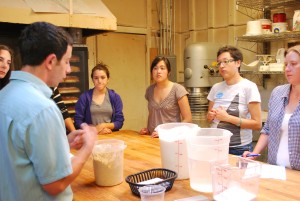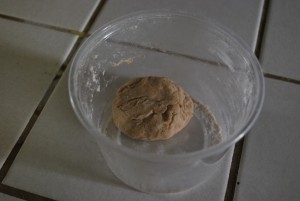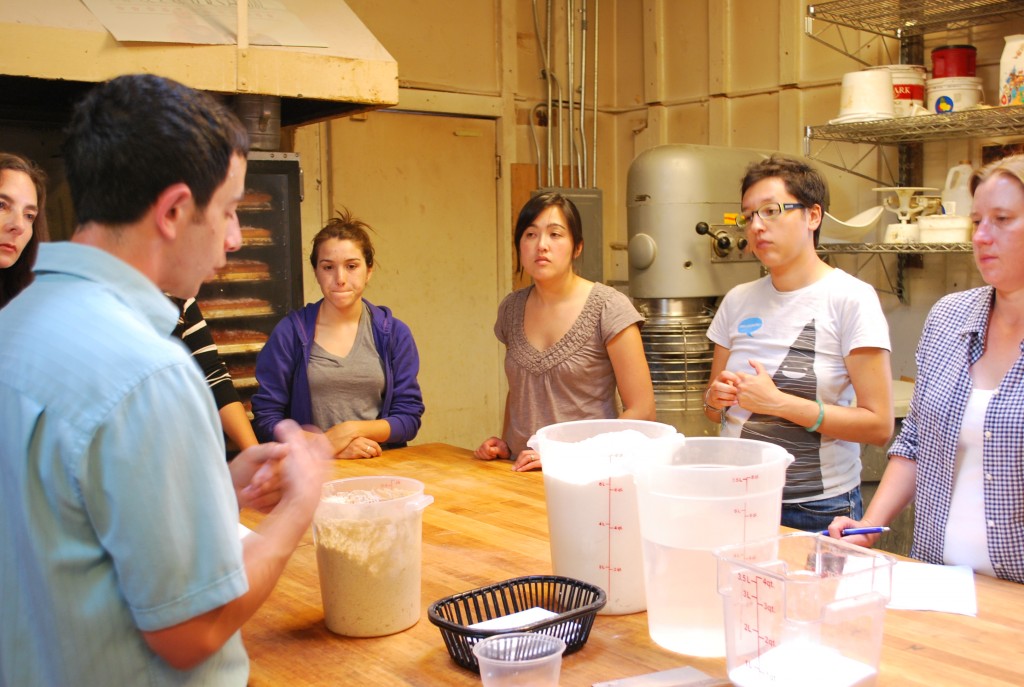Let’s start(er)
On Tuesday I participated to my first starter class with an eclectic and friendly group of bread amateurs. I barely knew about starters as I was always using granulated yeast when baking at my home kitchen.


A starter will help your dough rise and will give it its flavour. It is made of water, flour and above all love.
Why love? Because for the ones who were teenagers in the 90’s, a starter is like a Tamagotchi, it needs care and food otherwise it dies. But unlike a Tamagotchi, it can live forever, make babies and give you a lot of baking pleasure.
My starter, called Leche is a baby of Dulce, the starter of Danny, the brain and hands behind Sour Flour.
Danny gave birth to Dulce two years ago in Costa Rica. Apparently Dulce has been very active (and somewhat naughty) these last years and has kids all over San Francisco and beyond. We will soon start creating her family tree so if you have a starter at home who carries Dulce DNA, feel free to share its approximate birthdate, name and line of descent with us at danny@souflour.org.
Coming back to starters, it is important to watch and taste them to get to understand how they evolve and use them to their best potential. You can start a starter at home mixing about 2 tbsp of flour and water or contact us at Sour Flour for a piece of Dulce. Then you have to feed it on a regular basis (once or twice a day) with flour and water and start your experiment.
Alright, it seems easy like this but let me explain to you how I proceed (everyone has its own way of learning, this will be mine).
Every morning, I take a piece of Leche, the size of a hazelnut. I throw the rest in the compost.
I then feed Leche with the following ratio: her equivalent in flour and water. It means it is a 1:1:1 ratio (starter:flour:water). I mix all ingredients with my hands, shape a stiff ball and put her back in her covered container. This way I double the size of Leche.
Once Leche is fed, her taste is bland but over the hours, she will get sourer as the bacteria and natural yeast will eat the flour and the water. I will feed her again at night and watch her regularly to see how she gets active. So far it is difficult for me to know when she is really active, but I have the feeling (hey she’s my kid!) that when she gets a bit soft and gassy she must have reached a good activity.

Something I also learned at the class and at home is what can influence the starter: the heat. If Leche lives in a very hot environment, she will eat her food more quickly and will expand (a bit like me when I am on holidays). So she may need more regular feeding when she is in a warm environment.
If you want exhaustive information and ask any question about starters, I suggest you register to one of the workshops regularly held at Sour Flour. Otherwise, some additional info and tips can be found here.

